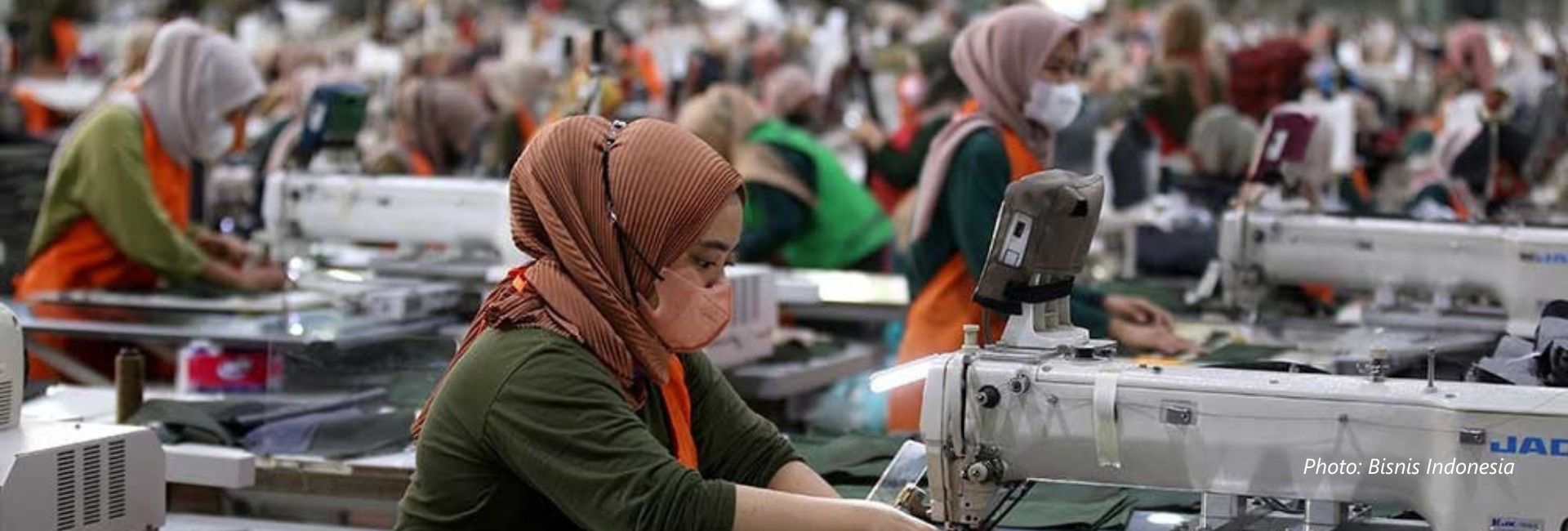Amid the urgency of the climate crisis and environmental degradation, the transition toward a green economy has become a key pillar of sustainable development. The National Medium-Term Development Plan (RPJMN) 2025–2029 places the creation of green jobs among its key priorities.
To support this transition, the Ministry of National Development Planning/National Development Planning Agency (Bappenas) has developed a Green Jobs Occupational Map covering five sectors (agriculture, manufacturing, construction, tourism, renewable energy) and cross-sectoral areas. However, most identified green jobs remain concentrated in positions requiring higher education. In the manufacturing sector, for instance, the map only includes level-5 and above positions (with a minimum education level of a diploma). Jobs at levels 4 and below—largely filled by the middle-income workforce—have yet to be mapped, even though they are essential for inclusive economic growth. Therefore, updating the Green Jobs Occupational Map is crucial, particularly for labor-intensive sectors such as textiles and garments.
With support from the Open Society Foundation (OSF), SMERU conducts a study focusing on the textile and textile product (TPT) subsector to identify potential green jobs. This subsector employs around 3.9 million workers, or one-fifth of Indonesia’s total manufacturing workforce (authors’ calculation based on BPS, 2025). It also recorded a trade surplus in 2024, with exports reaching USD 11.9 billion.
However, the textile and garment industry has significant environmental impacts: contributing to deforestation, consuming about 15 trillion liters of water annually, producing 1.2 billion tons of greenhouse gas emissions, and generating 20% of global water pollution. Recognizing these impacts, the RPJMN 2025–2029 prioritizes this sector for circular economy development.
Through this study, SMERU aims to support the sector’s transformation toward a more sustainable system by promoting green jobs and developing a workforce equipped with green skills. This inclusive transition will help achieve both national and global sustainable development goals.
This study, which will run from 2025 to 2028, will produce a range of knowledge products, including reports, policy briefs, and working papers covering three key areas.
- Maps of green job pathways and required skills in the TPT subsector
- Analysis of the capacity of education and training institutions
- Identification of key factors in green job development
These knowledge products will be consolidated into policy recommendations to support the government in accelerating the transformation of the TPT subsector toward a resilient and inclusive green industry.
This research project aims to provide comprehensive policy recommendations to
- foster the creation and development of inclusive green jobs in the textile and garment industries;
- support education and training institutions in preparing a green workforce that meets industry needs; and
- strengthen the green jobs ecosystem to help the textile and garment industries become more sustainable and resilient.
Given the broad scope of the industrial sector, the study zooms in on one sub-sector to produce actionable insights. It looks at three main aspects to guide policy development:
- On the demand side, it builds upon and enhances the existing national Green Jobs Occupational Map.
- On the supply side, it assesses the capacity of education and training institutions in creating and developing the workforce to support the green industries.
- At the ecosystem level, it identifies the key factors that drive the growth of green jobs and the transition toward a greener textile and garment industry.
This study employs a mixed-methods approach, combining qualitative and quantitative methods.
The qualitative component involves document reviews, in-depth interviews, focus group discussions (FGDs), and consultative meetings to analyze the characteristics of green jobs, the supply and demand for green workers, and the overall green jobs ecosystem within the textile and garment industry.
The quantitative component consists of firm-level surveys designed to measure the scale of labor demand and supply for green jobs in this sector. Data and information are collected both online and in person.



